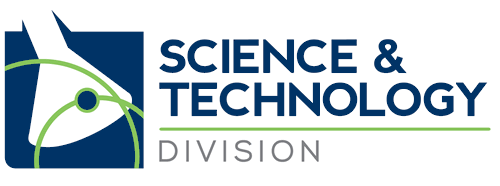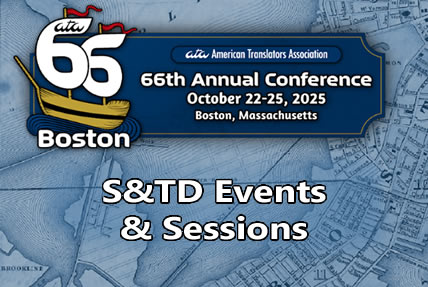By Mery Molenaar, S&TD Administrator
Updated: October 22, 2025
The following conference events and selected sessions may be of special interest to our members. Visit the ATA66 website for a full list of events and sessions.
Division Networking Get-together
Join us on Friday, October 24 at 6:30 pm for our division off-site event at Democracy Brewing. Check the registration page for more information.. All conference attendees and their guests are welcome to attend; division membership is not required.
Conference Sessions
Thursday, October 23
1:30 p.m. – 2:30 p.m.
The Need for an Expert Eye in the Translation of Clinical Trial Protocols
Presenter: Guadalupe Martin
2:40 p.m. – 3:40 p.m.
Patent Translation in the Time of Machine Translation Post-Editing (MT/PE)
Presenter: Matthew Schlecht
Friday, October 24
10:00 p.m. – 11:30 p.m.
From the Rosetta Stone to AI: The Human Drive to Decipher
Presenter: Yves Champollion – ATA66 Keynote Speaker
1:30 p.m. – 2:30 p.m.
The Language of Palliative Care
Presenter: Erin Halman – MD Distinguished Speaker
4:15 p.m. – 5:15 p.m.
Translation and the Making of Modern Science—Thoughts on Newton and Darwin
Presenter: Scott Montgomery – S&TD Distinguished Speaker
Read more: Spotlight Scott Montgomery: S&TD Distinguished Speaker
Saturday, October 25
8:30 p.m. – 9:30 p.m.
English and Translation in the Era of Globalized Science
Presenter: Scott Montgomery – Distinguished Speaker
Read more: Spotlight on Scott Montgomery: S&TD Distinguished Speaker
10:30 a.m. – 11:30 a.m.
Gene Editing with CRISPR
Presenter: Tapani Ronni
1:30 p.m. – 2:30 p.m.
Working with Large Language Models: Best Practices & Recognizing Hallucinations Part I
Presenter: Noah Caldwell – ALD Distinguished Speaker
2:40 p.m. – 3:40 p.m.
Working with Large Language Models: Best Practices & Recognizing Hallucinations Part II
Presenter: Noah Caldwell – ALD Distinguished Speaker
Still need to register for the conference? Early registration pricing ends on September 14, 2025. Register here


